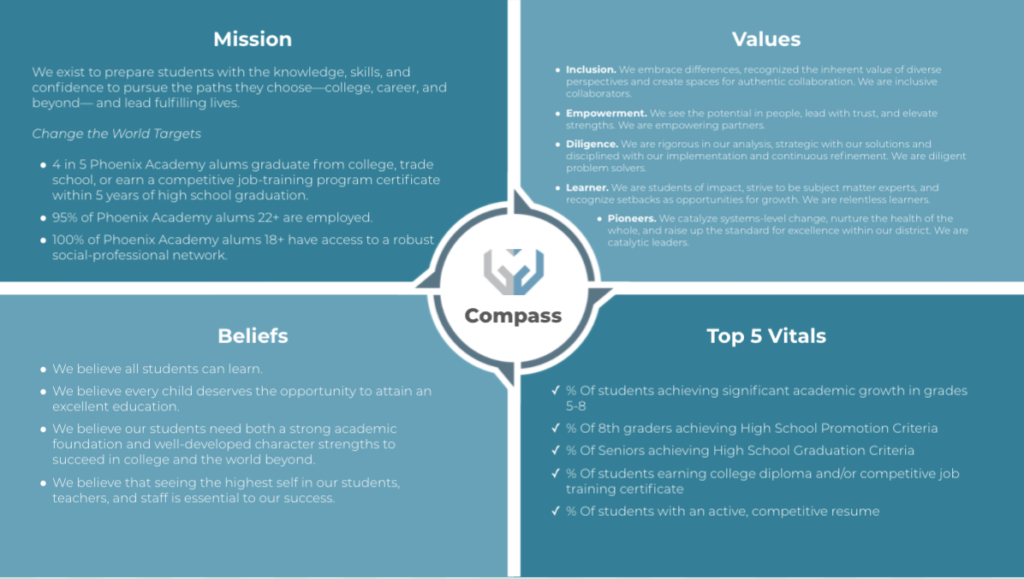By Shaun Lee
All too often visionary leaders want to jump right to developing a strategic plan before their organization’s identity is clear. Every good leader must be able to develop a compelling vision, but there is an important step that some leaders skip – defining the foundational identity of the organization. Three-to-five-year strategies should be inspired by your mission, beliefs and the measurable impact you are trying to make. Before jumping into developing strategic plans, leaders must make sure the following questions are both well-defined AND clear to everyone:
- Why do we exist? What is your most important shared core purpose? What will you be perpetually striving to achieve?
- When you think about your mission, what are the top 5 metrics that demonstrate progress towards accomplishing it?
- What are the collective convictions or beliefs about your work that inspired your mission and drive to continue to have greater impact in pursuit of it?
- What are the core values of your organization? Are the expected behaviors that make up the unique culture of your organization claimed and understood?

If you are like most leadership teams you probably identified a few areas above that still need clarity. If you’re not sure how aligned your team is, just imagine asking for responses to the above questions. How different might the responses be? Our encouragement is to define and then align on these questions before you forge forward and develop your next 3–5-year strategic plan. When you create strategic goals that have been developed through the process of debating how well they align to your mission, beliefs and Top 5 vitals, they will be more meaningful. Additionally, being clear on your core values will provide a set of behaviors and cultural norms that can be upheld throughout your strategic planning process. They will be more meaningful for a few reasons:
- The process of anchoring to and filtering through your organization’s identity will strengthen the leadership team’s conviction that they are the right strategic goals. When times get tough and you wonder if you landed on the right set of objectives, you will be reminded of the rigorous debate and work that took place to develop them.
- They offer a clear rationale for how they were created when you are rolling them to out the rest of the organization. Being able to explain how each strategic goal advances your mission, upholds your beliefs and helps you have the measurable impact you want to have, will build buy-in with the rest of the organization.
- They tether the organization to its most important “why,” ensuring you can avoid mission drift. There are always exciting new strategic opportunities to pursue, but only some of them will align with your organization’s foundational identity.
Clarity in Identity Deepens Engagement
Even with clear identity and a compelling 3-5 vision, it still takes highly engaged people to have your desired impact. The good news is that having clear answers to questions above will go a long way in attracting the right people. A key ingredient within successful nonprofits is that they have highly engaged people who are ardent believers in the work and the why behind it. When the strategic planning is complete it will be those highly engaged people who drive the objectives across the finish line. Without highly engaged people who feel committed to the foundational identity of the organization, you risk people not being bought in and continuing to debate whether certain strategies should be pursued. When people believe in the identity and feel a deep connection to it, they will believe that the 3–5-year strategic plan was created in pursuit of it, and they will move at the speed of trust.
If you would like to get a free Compass template email us at info@missionmattersgroup.com and we would love to send you one.
